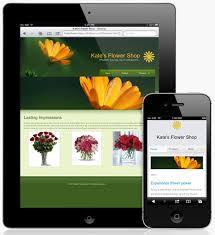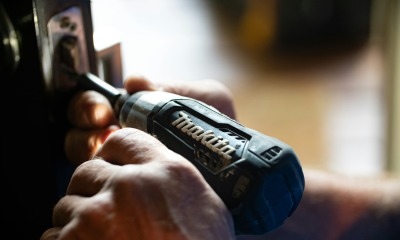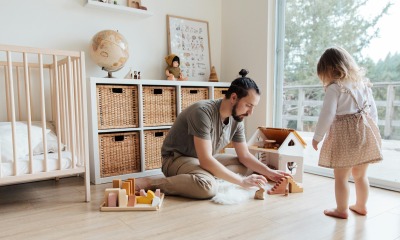General
The Embroidery Toolkit

Embroidery is one of the most popular crafting hobbies, perhaps because the same tools and skills can be used to create so many different kinds of project. You can decorate fabric – including clothing, accessories and even furniture – with what’s called surface embroidery, upcycling tired old clothes with unique, personal touches which can also disguise damage and mask repair work or stains.
Needlepoint and counted thread embroidery can create stunning artistic patterns, which you can display as works in their own right, or use to create jewellery, decorations for clothing or bags, or place settings and coasters.
To achieve all this – and enjoy the soothing feeling of working with your hands to create something for yourself – you need the right tools, and it’s your embroidery toolkit that we’re looking at today.
Needles
Choosing a needle for your embroidery project is more complicated than you might expect. Different kinds of embroidery need different needles. Surface embroidery uses what’s known as an embroidery needle – but counted thread embroidery doesn’t!
Embroidery needles, also known as crewel needles have a large eye and a sharp point, so help them pierce the different fabrics you might be sewing onto. These would make counted thread and needlepoint skills difficult to practice, because these rely on using the threads of a fabric as a grid, counting off squares and sewing between the threads. Tapestry needles have blunted points, making it less likely that you’ll punch through the fabric rather than slip between it. You can get everything you need for craft projects like these by investing in one or two punch needle embroidery kits from a craft store or online specialist.
Thread
You’ll be threading your embroidery (or tapestry) needle not with standard sewing thread but ‘embroidery floss’ a thicker thread, designed to be seen and make an impact – where sewing thread is supposed to not be seen. Floss comes in lots of different colours, but in a standard weight, which makes it easy to quickly assemble a library of different coloured floss, ready for any project.
Fabric
For surface embroidery, you don’t need any special fabric. It’s often used to decorate clothes, accessories, even furniture, where it has textile covers that will hold stitches. Counted thread and needlepoint embroidery both require a fabric with a regular number of threads in the warp and weft per square inch. If the fabric is irregular, then you can follow the pattern perfectly, but the design you produce will be irregular, lopsided or otherwise imperfect. Such fabrics are called ‘even-weave’ textiles, and these are what you need in your supply chest.
Embroidery Hoops
While there are other, more specialised embroidery tools, most projects only need a needle, floss, fabric and an embroidery hoop. This holds the fabric taught so you can sew into it easily and accurately.
There are cheap plastic hoops available for you to use, but as many embroidery designs can be finished and displayed in the hoop you sewed them in, it’s worth picking attractive looking options, even if you have to pay a little more.
-

 Tech11 years ago
Tech11 years agoCreating An e-Commerce Website
-

 Tech11 years ago
Tech11 years agoDesign Template Guidelines For Mobile Apps
-

 Business6 years ago
Business6 years agoWhat Is AdsSupply? A Comprehensive Review
-

 Business10 years ago
Business10 years agoThe Key Types Of Brochure Printing Services
-

 Tech8 years ago
Tech8 years agoWhen To Send Your Bulk Messages?
-

 Tech5 years ago
Tech5 years ago5 Link Building Strategies You Can Apply For Local SEO
-

 Law5 years ago
Law5 years agoHow Can A Divorce Lawyer Help You Get Through Divorce?
-

 Home Improvement6 years ago
Home Improvement6 years agoHоw tо Kеер Antѕ Out оf Yоur Kitсhеn































